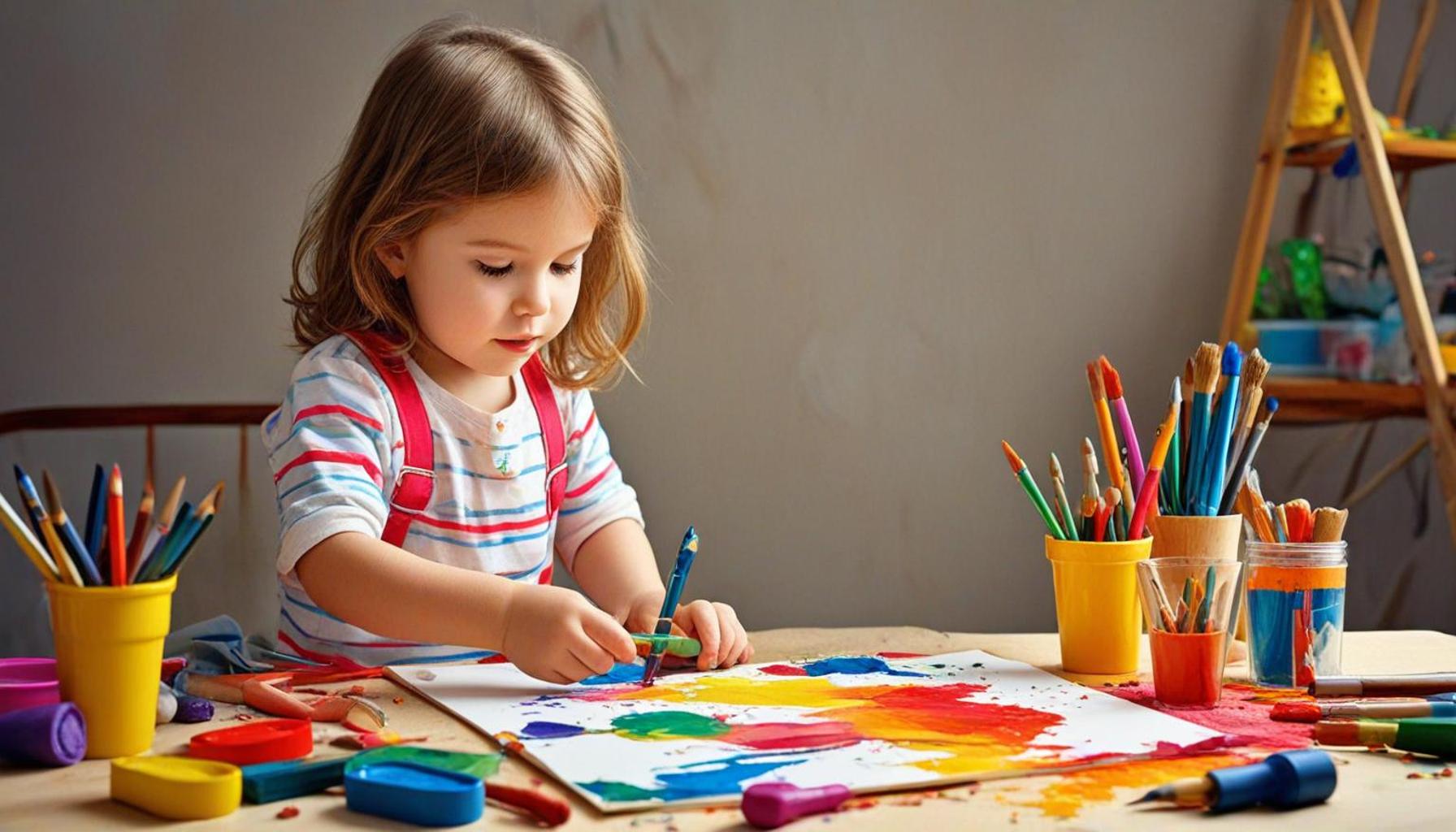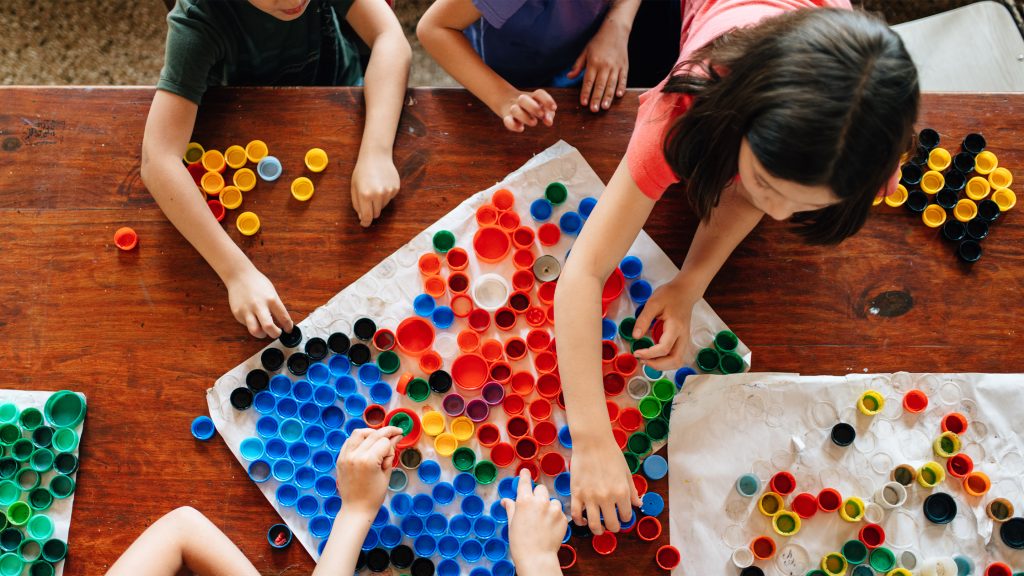The Importance of Art in Early Childhood Education: Stimulating Creativity from an Early Age

The Influence of Artistic Engagement on Child Development
Art goes beyond mere aesthetics; it serves as a powerful tool for fostering a child’s overall development. The incorporation of art into early childhood education provides children with unique opportunities to hone cognitive skills and enhances their emotional and social capacities. Numerous studies suggest that participation in artistic activities during a child’s formative years can result in significant and long-lasting impacts on their developmental trajectory.
Why is art essential?
The role of art in early learning is multifaceted and critical. Here are several compelling reasons why art should be a fundamental part of educational curricula:
- Cognitive Development: Art encourages problem-solving and decision-making skills. For example, when children engage in a painting project, they must decide which colors to use, how to mix them, and what techniques to employ. Such choices enhance their ability to think critically and approach problems creatively.
- Emotional Expression: Creating art provides children with a medium to express their thoughts and feelings. For instance, through drawing or sculpting, a child can communicate complex emotions—like joy, sadness, or frustration—in a way that may be difficult with words alone. This practice helps them understand and articulate their feelings better.
- Social Skills: Collaborative art projects are invaluable for promoting teamwork and communication among peers. Group endeavors, such as mural painting or collective sculpture, teach children how to share ideas, negotiate roles, and support one another, fostering a sense of community.
The benefits of art education extend far beyond creative outlets. Numerous studies reveal that children involved in artistic activities often experience improved academic performance and a greater ability to innovate in various subject areas. For example, children who regularly engage in drawing may excel in mathematics by understanding geometric shapes and spatial awareness better. Furthermore, hands-on activities help develop fine motor skills, serving as a foundation for future academic and life skills.
Recognizing its significance, many educational institutions across the United States are prioritizing the integration of art into their curricula. Programs focusing on art education not only provide an outlet for creative exploration but also prepare young learners for a dynamic and ever-changing world. These initiatives, exemplified by organizations like the Arts Education Partnership, emphasize the essential role of art in nurturing well-rounded individuals.
Engaging with the arts is not merely supplementary; it is vital for equipping future generations with the tools needed to navigate an increasingly complex landscape. Investing in art education today means actively shaping the innovators, leaders, and thinkers of tomorrow.

DISCOVER MORE: Click here to learn how music can uplift your mental well-being
The Transformative Effects of Art Education
In the evolving landscape of early childhood education, art is increasingly recognized as a catalyst for enhancing creativity and holistic development. The importance of art in early childhood education is particularly pronounced as it fosters a range of skills that are essential for future success. Studies have consistently shown that children who engage in artistic activities exhibit improvements in areas such as communication skills, cognitive ability, and emotional intelligence. However, to truly appreciate the impact of art, it is crucial to understand its diverse benefits.
Benefits Beyond the Canvas
Art education serves as more than just a creative outlet; it encompasses various developmental aspects that are vital for young learners. Here are several key benefits that demonstrate why art should be an integral component of early educational curricula:
- Enhanced Cognitive Skills: Engaging in artistic expression promotes critical thinking and analytical skills. Activities such as painting or crafting require children to utilize their imagination, experiment with different approaches, and learn from their mistakes. These experiences enhance cognitive flexibility, enabling them to adapt and find solutions in diverse situations.
- Boosted Language Development: Art can be a powerful vehicle for language learning. As children describe their artwork or share stories about their creations, they expand their vocabulary and improve their communication skills. This practice nurtures a love for storytelling that extends beyond the classroom.
- Emotional Resilience: Art provides children with an avenue for processing their emotions. The act of creating can be therapeutic, allowing students to channel feelings of anxiety or frustration into tangible expressions. This emotional resilience cultivated through art education can lead to improved mental health and well-being.
Moreover, research from institutions such as the National Endowment for the Arts has highlighted how art participation correlates with increased academic success. For instance, students engaged in frequent artistic activities exhibit higher test scores and a greater propensity for innovative thinking in subjects like mathematics and science. The hands-on experience acquired through art also plays a significant role in developing fine motor skills, crucial for academic pursuits such as writing and typing.
Recognizing these myriad benefits, many early childhood programs across the United States are actively integrating art into their learning frameworks. Initiatives supported by organizations like Americans for the Arts provide educators with the resources and training necessary to successfully implement art education, highlighting its role in nurturing well-rounded individuals prepared for the complexities of the modern world. From early art classes to creative workshops, these programs are paving the way for children to explore their inherent creativity.
Ultimately, investing in art education for young children goes beyond fostering individual talent; it contributes to the development of a culture that values creativity, emotional expression, and collaboration. By prioritizing artistic engagement from an early age, society not only shapes talented individuals but also cultivates a future filled with innovative thinkers ready to tackle the challenges of tomorrow.
| Category 1 | Category 2 |
|---|---|
| Creativity Development | Art facilitates self-expression through various mediums, allowing children to explore their imagination freely. |
| Emotional Growth | Engaging in art helps young learners develop emotional intelligence by expressing feelings and understanding narratives. |
Art plays a critical role in early childhood education, as it serves as a foundational tool for enhancing children’s cognitive development. By integrating art into their daily routine, children cultivate problem-solving skills and critical thinking. For instance, when children are tasked with completing an art project, they are required to make choices about colors, shapes, and materials, fostering their ability to analyze and evaluate different options.Furthermore, art education has been linked to improved academic achievement across various subjects. Studies indicate that children who engage regularly in artistic activities often perform better in mathematics and literacy, as these subjects require similar skill sets of creativity and innovative thinking. In addition to cognitive and emotional benefits, art also encourages teamwork and collaboration. Group projects promote social interaction among peers, enhancing communication skills and fostering a sense of community. This aspect of art not only enriches their learning experience but also prepares them for future collaborative work environments. Ultimately, the incorporation of art in early childhood education cultivates a well-rounded individual poised for success in an ever-evolving world.
DISCOVER MORE: Click here to learn about the power of music on mental health
Fostering Social Connections Through Art
Art education also plays a critical role in enhancing social skills among young children. Collaborative projects, such as group mural painting or shared crafting, encourage children to work together, communicate their ideas, and appreciate different perspectives. These experiences not only help children learn the value of teamwork but also instill a sense of community and belonging. In fact, according to a study conducted by the Harvard Graduate School of Education, children who participate in collaborative artistic activities demonstrate higher levels of empathy, insight, and social awareness.
Art as a Tool for Cultural Awareness
In a diverse society like the United States, the importance of art in early childhood education extends to promoting cultural awareness. Artistic exploration allows children to learn about different cultures through various art forms—be it Native American patterns, African drumming, or Asian calligraphy. By engaging with these art forms, children gain a deeper understanding of multicultural perspectives, fostering inclusivity and respect for differences. Programs that integrate art with cultural education not only enrich the learning experience but also prepare children to navigate an increasingly globalized world.
Integration into STEM Education
Moreover, there is a growing recognition of the intersection between art and STEM (Science, Technology, Engineering, and Mathematics) education, leading to the emergence of STEAM (Science, Technology, Engineering, Arts, and Mathematics) initiatives. By incorporating art into the STEM framework, educators are reimagining traditional learning pathways. For instance, children might use their artistic skills to model scientific principles through 3D design or create visual data representations through infographics. This not only fosters creativity but also enhances problem-solving capabilities, which are essential in a rapidly evolving workforce.
The Role of Technology in Art Education
With technology becoming an integral part of education, digital art tools are also enhancing the accessibility and engagement of art education. Platforms that promote digital creativity allow children to engage with art in innovative ways, such as video animation, graphic design, and online collaboration. Programs like Scratch, which teaches coding through creative expression, are gaining traction, demonstrating how technology can seamlessly integrate with art initiatives. This digital shift not only stimulates creativity but also prepares children for a tech-savvy future where these skills will be invaluable.
As institutions and educators strive to adapt to modern demands, the response to the importance of art in early childhood education should be clear. By combining artistic exploration with elements of cultural awareness, social connection, and technology, educators are nurturing well-rounded individuals capable of thriving in various disciplines. Engaging children in this multifaceted approach ensures they are not only well-prepared academically, but also equipped with the essential skills to navigate and contribute positively to a complex world.
DISCOVER MORE: Click here to learn how creativity can enhance your well-being
Conclusion: A Holistic Approach to Learning
In conclusion, the importance of art in early childhood education cannot be overstated. It serves as a crucial foundation for nurturing creativity, boosting cognitive development, and fostering essential social skills among young learners. As we have explored, art education goes beyond mere expression; it encompasses collaborative experiences that cultivate empathy and cultural awareness. By encouraging children to engage with diverse artistic forms, we prepare them to navigate and appreciate the rich tapestry of our multicultural society.
The integration of art into STEM education further illustrates its transformative potential. By embracing the STEAM approach, educators create dynamic learning environments that stimulate innovative thinking and problem-solving skills—skills that are imperative in today’s rapidly evolving landscape. Furthermore, the incorporation of technology in art education opens up new avenues for creativity, ensuring that children are adept in both traditional and digital domains.
As advocates for an enriching educational experience, we must continue to champion the role of art within early childhood education. Schools, policymakers, and parents alike should recognize and invest in arts initiatives to foster holistic development in young learners. By prioritizing art education, we are not just stimulating creativity; we are laying the groundwork for a future generation that is innovative, empathetic, and well-equipped to face the challenges of an increasingly complex world. Engaging children through art today promises to cultivate the leaders, thinkers, and creators of tomorrow.
Related posts:
The Influence of Art on Mental Health: Creativity as a Path to Well-Being
The Influence of Digital Art on the New Generation of Artists
Art as a Universal Language: Connecting Cultures and Experiences Through Creativity
Art as a Tool for Activism: Movements and Messages
How Street Art Reflects Contemporary Social and Cultural Issues
Exploring Different Forms of Artistic Expression: Painting, Music, and Dance

Linda Carter is a writer and creative hobbies expert specializing in crafting, DIY projects, and artistic exploration. With extensive experience helping individuals discover their creative potential and bring their ideas to life, Linda shares her knowledge on our platform. Her goal is to empower readers with practical tips, inspiring ideas, and step-by-step strategies for success in the world of creative hobbies.